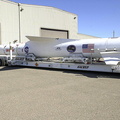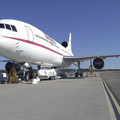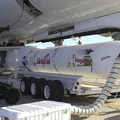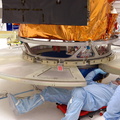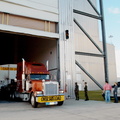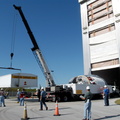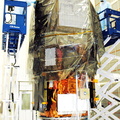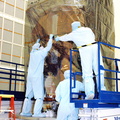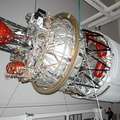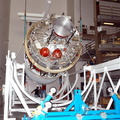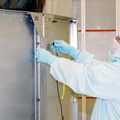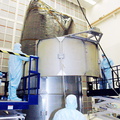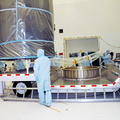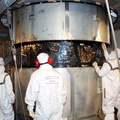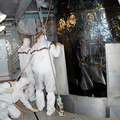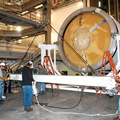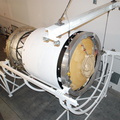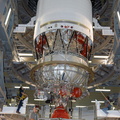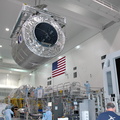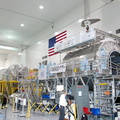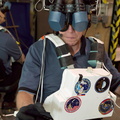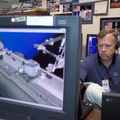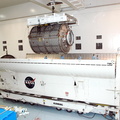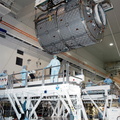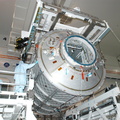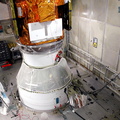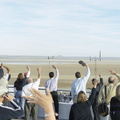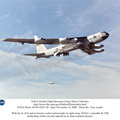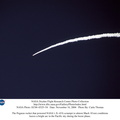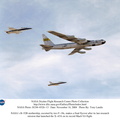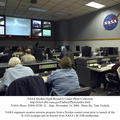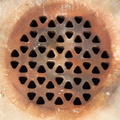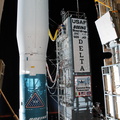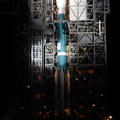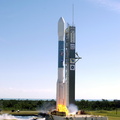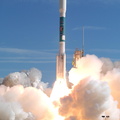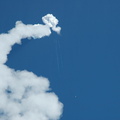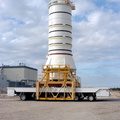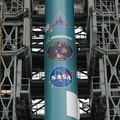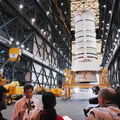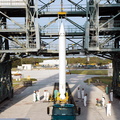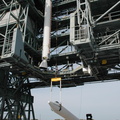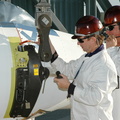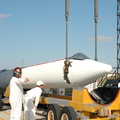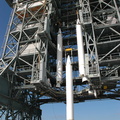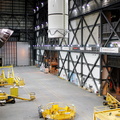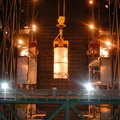
WIKIARCHIVES.SPACE
The Human Spaceflight Archive

Information
- Taken in
- Kennedy Space Center
- Author
- NASA
- Description
- On Launch Pad 17-B, Cape Canaveral Air Force Station, Fla., a second Solid Rocket Booster (SRB) is raised off a transporter to be lifted up the mobile service tower. It will be attached to the Boeing Delta II launch vehicle for launch of the Deep Impact spacecraft. A NASA Discovery mission, Deep Impact will probe beneath the surface of Comet Tempel 1 on July 4, 2005, when the comet is 83 million miles from Earth, and reveal the secrets of its interior. After releasing a 3- by 3-foot projectile to crash onto the surface, Deep Impacts flyby spacecraft will collect pictures and data of how the crater forms, measuring the craters depth and diameter, as well as the composition of the interior of the crater and any material thrown out, and determining the changes in natural outgassing produced by the impact. It will send the data back to Earth through the antennas of the Deep Space Network. Deep Impact project management is handled by the Jet Propulsion Laboratory in Pasadena, Calif. The spacecraft is scheduled to launch Dec. 30, 2004.
- Created on
- Tuesday 23 November 2004
- Source link
- https://science.ksc.nasa.gov/gallery/photos/2004/captions/
- Visits
- 37
- Rating score
- no rate
- Rate this photo
- License
- CC BY-NC-ND
- Modified by WikiArchives
- No (original)
- Downloads
- 0
Powered by Piwigo
